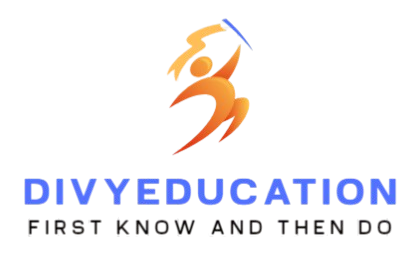Multimedia Technologist
What is a Multimedia Technologist?
A Multimedia Technologist is a professional who combines technology, design, and communication to create and manage digital content across various media platforms. This includes video, audio, graphics, animations, websites, and interactive applications. They work with multimedia tools and technologies to produce visual content for entertainment, advertising, education, and business purposes.

Education Eligibility

To become a Multimedia Technologist, candidates typically need to have the following qualifications:
- Basic Requirement: A high school diploma or equivalent with a focus on subjects like computer science, art, or design.
- Bachelor’s Degree: A bachelor’s degree in Multimedia, Animation, Graphic Design, Web Development, or related fields. This usually takes about 3-4 years to complete.
- Postgraduate Options: Some may pursue a master’s degree in Multimedia Technologies or related areas to specialize further.
Handicapped Eligibility
People with disabilities can pursue a career as a Multimedia Technologist, provided they meet the academic and technical skills required. Many institutions offer special accommodations and support services for students with disabilities. It’s important to check with specific colleges or universities for available resources, scholarships, and support programs.

Admission Process

The admission process for Multimedia Technologist programs usually involves:
- Application Submission: Submitting an application form along with academic transcripts.
- Entrance Exam (if applicable): Some universities may require an entrance exam in subjects like English, general knowledge, or design aptitude.
- Portfolio Submission: For some programs, particularly in design and animation, a portfolio showcasing previous work may be required.
- Personal Interview/Group Discussion: Some institutes may conduct interviews or group discussions as part of the selection process.
Entrance Exam
Entrance exams for multimedia programs typically assess your aptitude in areas such as:
- General Knowledge
- English Language Skills
- Creative Abilities
- Design Skills Some common exams for multimedia and related programs include those for engineering colleges (like JEE), art and design institutes (like NID, NIFT), or specific university exams.
Colleges and Universities
Some prominent colleges and universities offering Multimedia Technologist-related programs include:
- National Institute of Design (NID)
- National Institute of Fashion Technology (NIFT)
- Symbiosis Institute of Design (SID)
- Indian Institutes of Technology (IITs) (for courses in multimedia design and technology)
- International Media Institute
- University of California, Los Angeles (UCLA) (for multimedia and related disciplines)
- University of Arts London (UAL) (for design and multimedia programs)
Scholarships
Various scholarships are available for students pursuing Multimedia Technology programs, including:
- Merit-based Scholarships: Awarded to students with outstanding academic performance.
- Government Scholarships: Depending on your region, you may be eligible for government-funded scholarships (e.g., for economically disadvantaged students, students with disabilities).
- University-specific Scholarships: Many universities offer their own scholarships for multimedia and design students.
- Industry-Specific Scholarships: Some tech companies or media corporations offer scholarships for students in creative fields
Time and Expenses
- Time: A typical undergraduate program in Multimedia Technology takes 3-4 years, while a postgraduate degree takes 1-2 years.
- Expenses: Tuition fees vary greatly depending on the institution. For private institutions, fees can range from $5,000 to $20,000 per year. Public institutions tend to be more affordable. In addition, there may be costs for materials, software licenses, and technology equipment.
Average Income
The average salary of a Multimedia Technologist varies depending on experience, location, and specialization:
- Entry-level salary: $35,000–$50,000 annually.
- Mid-career salary: $50,000–$70,000 annually.
- Experienced professionals: $70,000–$100,000+ annually. Freelancers may earn higher hourly rates depending on the complexity of their projects.
Growth in Career
The career growth in multimedia technology is promising, with the increasing demand for digital content creation in entertainment, marketing, and corporate sectors. Professionals can advance to roles like:
- Senior Multimedia Designer
- Creative Director
- UX/UI Designer
- Multimedia Project Manager
- Digital Media Strategist
The multimedia industry is expected to grow with the increasing importance of digital media across sectors.
Specialist Roles
A Multimedia Technologist can specialize in:
- Graphic Design
- Animation (2D/3D)
- Web and App Development
- Video and Audio Production
- Virtual Reality (VR) and Augmented Reality (AR)
- User Interface (UI) & User Experience (UX) Design
- Interactive Media Design
Scope in Government and Private
- Private Sector: There is a significant demand for Multimedia Technologists in advertising, film production, gaming, web design, and corporate communication.
- Government Sector: Opportunities may exist in media departments, public information agencies, educational institutions, and government-backed media production companies. Some government positions may involve creating educational videos, websites, or digital campaigns.
What Work Will I Have to Do at My Workplace?
-
As a Multimedia Technologist, your job responsibilities might include:
- Designing and Developing Digital Content: This includes websites, mobile apps, animations, videos, and graphics.
- Using Multimedia Tools and Software: You’ll work with tools like Adobe Creative Suite, Final Cut Pro, or 3D modeling software to create content.
- Collaborating with Teams: Working closely with designers, developers, marketers, and clients to understand their requirements and deliver multimedia solutions.
- Project Management: Overseeing the production process, managing timelines, budgets, and resources.
- Testing and Optimization: Ensuring that the digital content works across multiple devices and platforms, and making adjustments as needed.
Your work will likely involve creativity, problem-solving, technical skills, and constant adaptation to emerging trends in the multimedia field.

